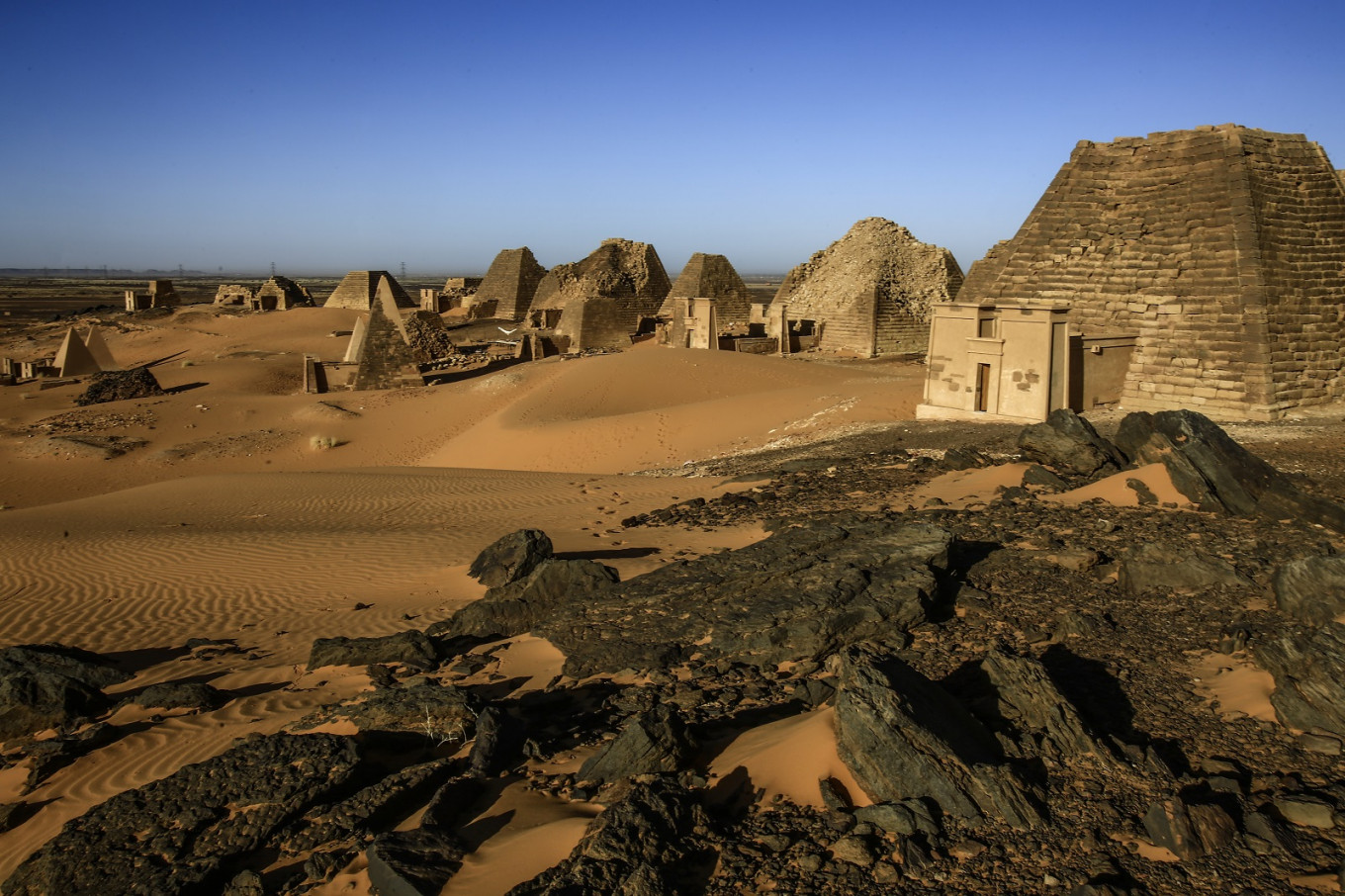Popular Reads
Top Results
Can't find what you're looking for?
View all search resultsPopular Reads
Top Results
Can't find what you're looking for?
View all search resultsSudan floods threaten ancient archaeological gem
Change text size
Gift Premium Articles
to Anyone
 A picture taken on April 4, 2019 shows a partial view of the Meroe pyramids, which hold burial chambers for Kushite kings and queens whose rule spanned nearly five centuries from 592 B.C. to 350 A.D., near the banks of the Nile river in an area known as Nubia in northeastern Sudan.
(AFP/Ashraf Shazly)
A picture taken on April 4, 2019 shows a partial view of the Meroe pyramids, which hold burial chambers for Kushite kings and queens whose rule spanned nearly five centuries from 592 B.C. to 350 A.D., near the banks of the Nile river in an area known as Nubia in northeastern Sudan.
(AFP/Ashraf Shazly)
R
ising Nile floodwaters are threatening to swamp an ancient archaeological site in Sudan, after some of the highest ever recorded river levels, archaeologists said Monday.
Teams have set up sandbag walls and are pumping out water to prevent damage at the ruins of Al-Bajrawiya, once a royal city of the two-millenia-old Meroitic empire, said Marc Maillot, head of the French Archaeological Unit in the Sudan Antiquities Service.
"The floods had never affected the site before," Maillot said.
The area includes the famous Meroe pyramids, a UNESCO World Heritage site.
Farmers along the fertile banks of the Nile, the world's longest river, depend on its annual floods.
But water levels have risen much further than usual this year.
"The situation is currently under control, but if the level of the Nile continues to rise, the measures taken may not be sufficient," Maillot said, adding that the site is usually some 500 meters away from the river.
Other ancient sites are also threatened along the Nile, according to Maillot.
Read also: Gold-hunting diggers destroy Sudan's priceless past
Sudanese authorities last week declared a three month national state of emergency after record breaking floods that have killed at least 99 people.
Officials said they had recorded the highest waters on the Blue Nile -- which joins the White Nile in the Sudanese capital Khartoum -- since records began over a century ago.
Faisal Mohamed Saleh, Sudan's information and culture minister, visited the site to see the work being done to protect it.
The site, some 200 kilometers northeast of Khartoum, was a capital of an empire that controlled vast swathes of land from 350 BC to 350 AD.
Sudan's ancient civilizations built more pyramids than the Egyptians, but many are still unexplored.










